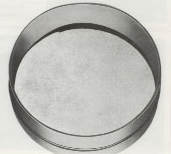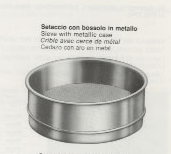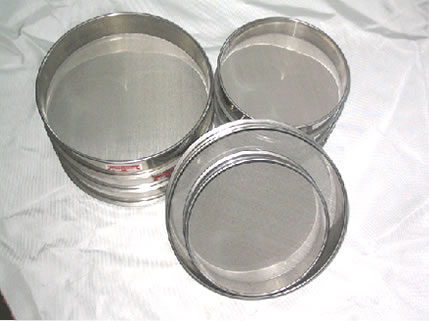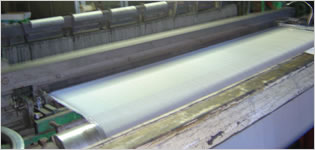Plain Weave Single or Double Layer Circular Test Sieves: Common Mesh Counts
Test sieves are essential tools in material analysis, designed to separate and classify particles based on size. They feature a sturdy frame and precisely woven mesh, ensuring accuracy and durability in laboratory and industrial applications. These sieves are commonly used in various fields such as pharmaceuticals, chemicals, food processing, and construction to ensure product quality and consistency. The advantages of test sieves include their ease of use, reliable performance, and the ability to handle a wide range of particle sizes. Their robust construction and precision make them indispensable for achieving consistent, repeatable results in particle size analysis.
Materials
- Test sieves are constructed using high-quality materials to ensure durability and precision. Common materials include 304 and 316 stainless steel, known for their corrosion resistance and strength, as well as brass and phosphor bronze for specific applications requiring non-magnetic properties or unique chemical resistance.
Wire Diameter
- The wire diameter in test sieves can vary depending on the required mesh size and application. Typical wire diameters range from 0.025 mm to 0.5 mm, ensuring precise particle separation. Thicker wires provide added strength for larger mesh sizes, while finer wires offer more accuracy for smaller particle sizes.
Mesh Count
- Mesh count, representing the number of openings per linear inch, is crucial in determining the sieve's application. Common mesh counts include 10, 20, 40, 60, 80, 100, 200, and 400. Higher mesh counts, such as 200 or 400, are used for fine particle analysis, while lower counts, like 10 or 20, are suitable for coarser materials.
Standard Shapes
- Test sieves are typically circular, with diameters ranging from 5 cm (2 inches) to 40 cm (15.75 inches). Standard diameters include 12.5 cm (5 inches), 20 cm (8 inches), and 30 cm (12 inches). Square and rectangular shapes are also available for specific applications, such as coal and grain analysis.
Finishing
- The finishing of test sieves ensures their durability and ease of use. Common finishes include electro-polished stainless steel for corrosion resistance and easy cleaning, and natural brass or bronze finishes for applications requiring non-magnetic properties. The smooth finish also prevents sample contamination.
Weave Types
- Various weave types are used in test sieves, each suited to specific applications. Plain weave is the most common, providing a simple and effective mesh. Twill weave offers a denser mesh for finer particles, while Dutch weave provides enhanced strength and durability for heavy-duty applications.
Construction Type
- Test sieves are constructed with either a single or double layer of mesh. Single-layer sieves are standard for most applications, providing adequate strength and precision. Double-layer sieves offer additional support for larger particles or higher loads, ensuring consistent performance under demanding conditions.
Typical Standards
- Test sieves adhere to international standards to ensure consistency and reliability. Common standards include ISO 3310-1 for test sieves of metal wire cloth, ASTM E11 for sieve specifications, and BS 410-1 for test sieves of metal wire cloth and perforated plate.
Packaging
- Test sieves are packaged to protect them during transport and storage. They are typically wrapped in protective film and placed in sturdy cardboard boxes. For high-precision sieves, additional cushioning materials such as foam inserts or bubble wrap are used to prevent damage and maintain calibration accuracy.
 |
 |
 |
|





